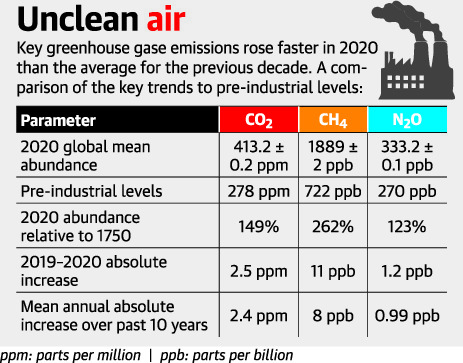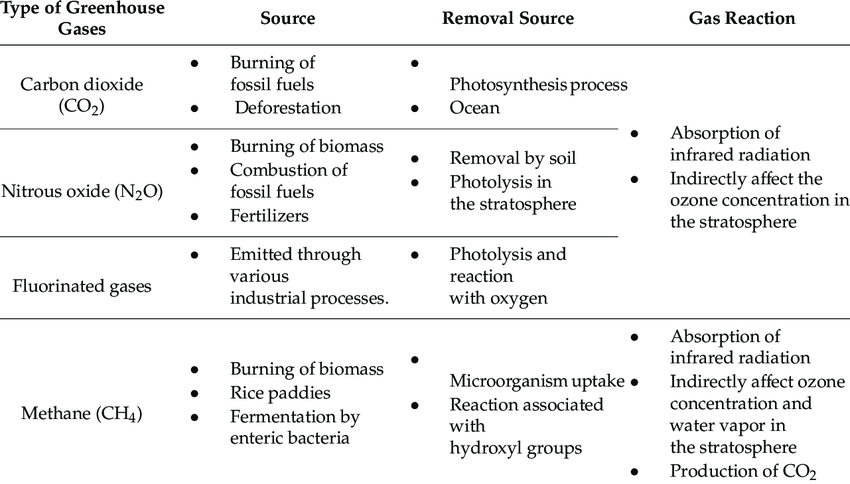Biodiversity & Environment
Report on Heat-trapping Gases in the Atmosphere: WMO
- 27 Oct 2021
- 3 min read
Why in News
According to the World Meteorological Organization (WMO) Greenhouse Gas Bulletin, the abundance of heat-trapping greenhouse gases in the atmosphere once again reached a new record last year (2020), with the annual rate of increase above the 2011-2020 average.
- This is despite the approximately 5.6% drop in fossil fuel CO2 emissions in 2020 due to restrictions related to the pandemic.
- Earlier, the WMO released a report named United in Science 2021. WMO is a specialized agency of the United Nations for meteorology (weather and climate), operational hydrology and related geophysical sciences.
- The WMO Global Atmosphere Watch Programme coordinates systematic observations and analysis of greenhouse gases and other atmospheric constituents.
Key Points
- Data Analysis:
- Concentration of Carbon Dioxide (CO2), the most important greenhouse gas, reached 413.2 parts per million in 2020 and is 149% of the pre-industrial level.
- Many countries are now setting carbon neutral targets and it is hoped that COP26 (Climate Conference) will see a dramatic increase in commitments.
- Methane (CH4) is 262% and Nitrous Oxide (N2O) is 123% of the levels in 1750 when human activities started disrupting Earth’s natural equilibrium.
- The economic slowdown from Covid-19 did not have any distinguishable impact on the atmospheric levels of greenhouse gases and their growth rates, although there was a temporary decline in new emissions.
- From 1990 to 2020, radiative forcing – the warming effect on our climate - by long-lived greenhouse gases increased by 47%, with CO2 accounting for about 80% of this increase.
- The ability of land ecosystems and oceans to act as “sinks” may become less effective in future, thus reducing their ability to absorb carbon dioxide and act as a buffer against larger temperature increases.
- Concentration of Carbon Dioxide (CO2), the most important greenhouse gas, reached 413.2 parts per million in 2020 and is 149% of the pre-industrial level.
- Concerns:
- An increase in the temperature is expected by the end of this century far in excess of the Paris Agreement targets of 1.5 to 2 degrees Celsius above pre-industrial levels.
- Parts of the Amazon rainforest have gone from being a carbon sink that sucks carbon dioxide from the air to a source of CO2 due to deforestation and reduced humidity in the region.
- Given the long life of CO2, the temperature level already observed will persist for several decades even if emissions are rapidly reduced to net zero. Alongside rising temperatures, this means more weather extremes including intense heat and rainfall, ice melt, sea-level rise and ocean acidification, accompanied by far-reaching socioeconomic impacts.
- Related Indian Initiatives:
- Seaweed-Based Animal Feed to reduce methane emissions in bovine
- India Greenhouse Gas Program
- National Action Plan on Climate Change
- Bharat Stage-VI Norms








